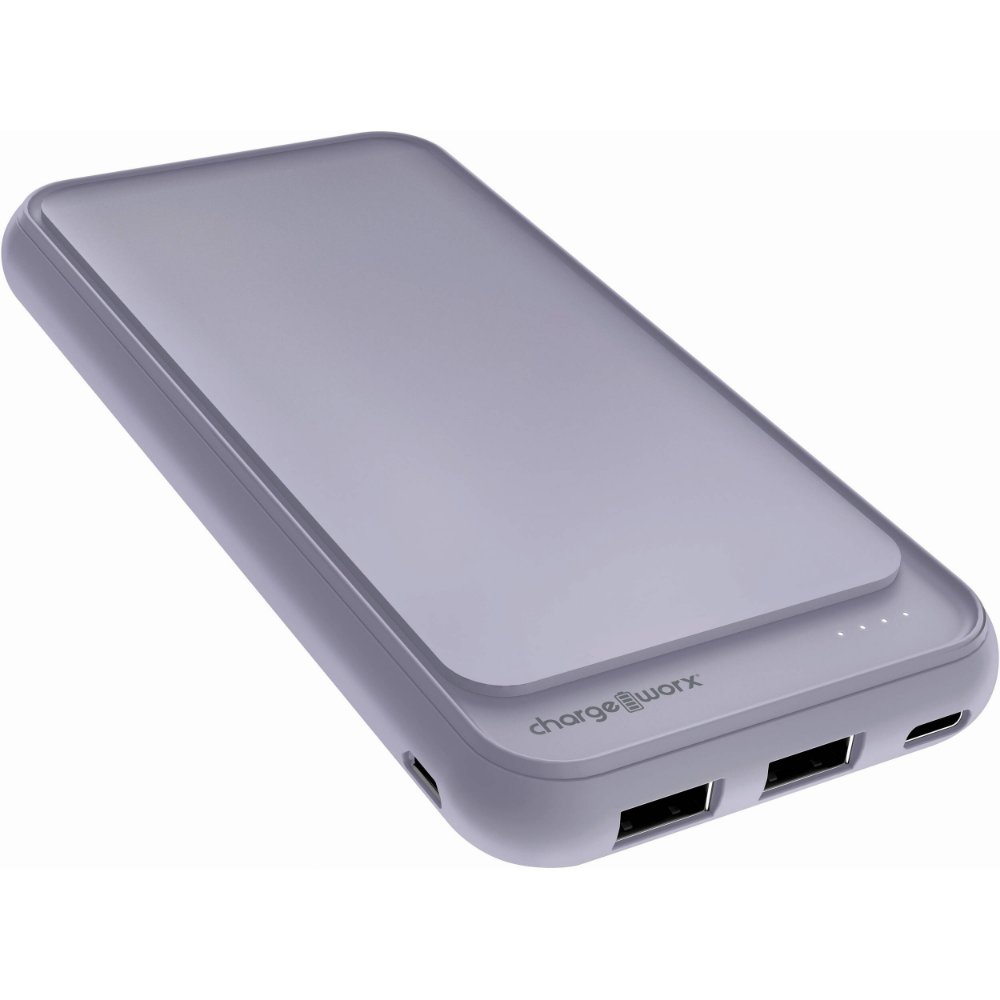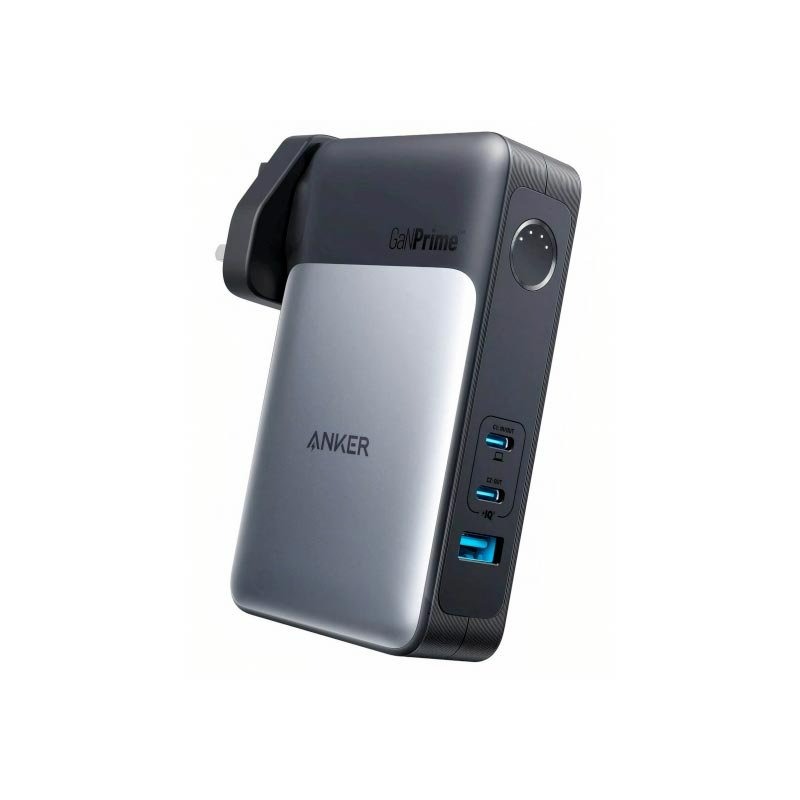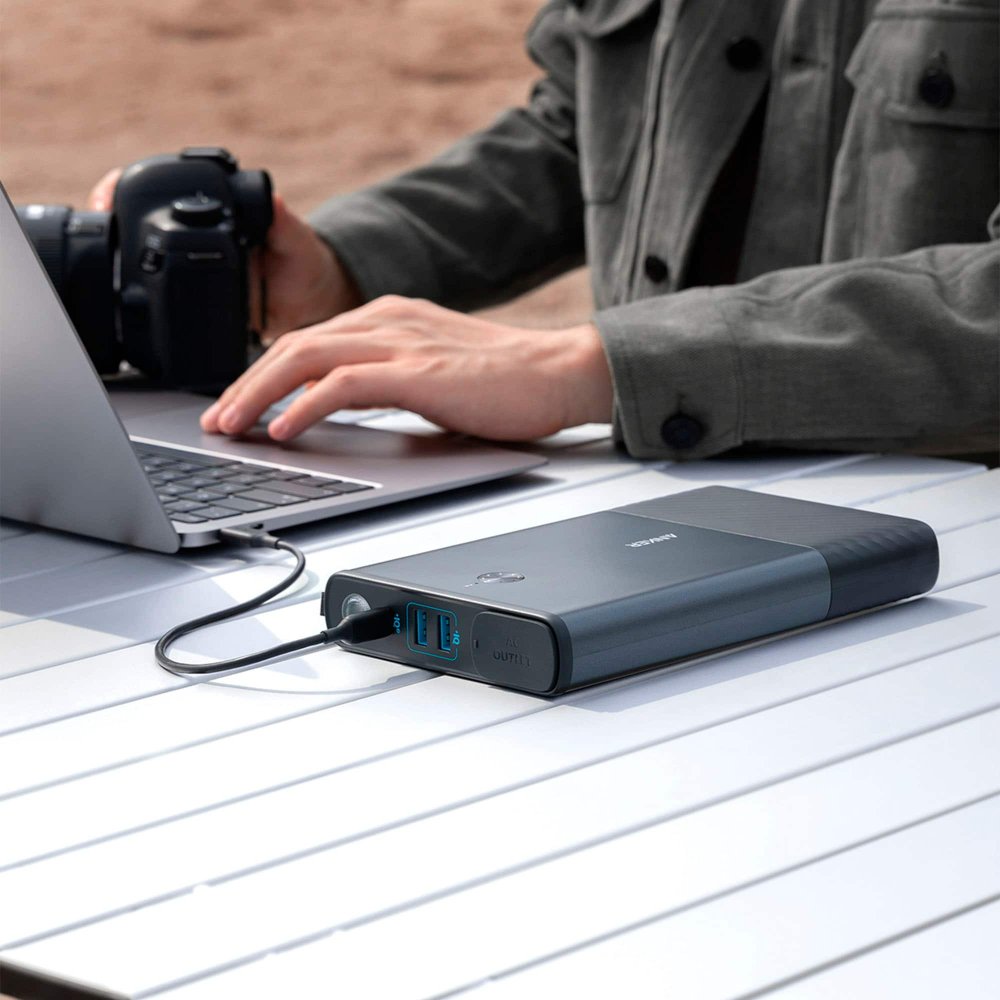What is a Power Bank?
A power bank is a portable device that serves as a backup battery for electronic gadgets. It stores electrical energy and can charge devices like smartphones, tablets, and laptops without needing a wall socket. Power banks come in various shapes, sizes, and capacities to suit different charging needs.
Power banks use rechargeable lithium-ion batteries, similar to those found in many modern devices. These batteries store a charge for long periods, ensuring your devices can get power when you’re on the move. To use a power bank, you connect it to your device with a USB cable or, in some models, wirelessly.
In essence, power banks act as portable power stations. They’re invaluable during travel, outdoor adventures, or when you don’t have access to conventional charging options. They keep your devices running longer, so you don’t have to worry about your battery levels while away from home.
Simple to use and widely available, power banks meet the growing need for continuous device use. They’ve become a must-have accessory in our tech-driven lives, proving their worth in keeping us connected and powered up wherever we may be.

How Power Banks Function
How does a power bank work? Understanding how a power bank works is key to making the most of its functionality. Inside each power bank is one or more lithium-ion batteries, the same type used in most of today’s electronic gadgets. Think of a power bank as a mini portable power station that you can carry in your pocket or bag.
Here’s the basic process:
- Charging the Power Bank: First, you need to charge the power bank itself. This is done by connecting it to a power source, like a USB charger or mains electricity, via its input port.
- Storing Energy: Once connected to a power source, the power bank’s internal batteries store electrical energy. This energy is held until you need to charge a device.
- Transferring Energy: When your device needs power, connect it to the power bank’s output port using a USB cable or wireless connection, if available. The power bank then delivers its stored energy to your device, effectively charging it.
- Control Circuits: Power banks also have built-in control circuits that manage the flow of electricity. These circuits prevent overcharging or discharging, ensuring both your device and the power bank remain safe during use.
- Safety Features: High-quality power banks come with additional safety features like overheat protection and short circuit prevention, which shield your devices from potential damage.
By tapping into the power bank’s stored energy, you can charge your devices on the go without the need of a wall outlet, making it a convenient companion for your daily activities and travels.
Types of Power Banks and Their Uses
Understanding the various types of power banks is essential in choosing the right one for your needs. Here are the main categories you’ll find in the market:
Portable Power Banks
Portable power banks are compact and easy to carry. They are ideal for everyday use to keep your phone or small devices charged. These typically have a lower capacity but are convenient for daily activities and short trips.
High-Capacity Power Banks
High-capacity power banks have larger batteries and can charge your devices multiple times. They suit long trips or heavy users who need to charge multiple devices or one device several times.
Wireless Power Banks
Wireless power banks offer the convenience of charging without cables. Place your device on top of the bank, and it starts charging. They work with smartphones and other devices that support wireless charging.

Solar Power Banks
Solar power banks use sunlight to recharge. They are excellent for outdoor activities and continue charging as long as there is sunlight. They often have a rugged design to withstand outdoor conditions.
Power Bank Capacity and Charging Cycles
Understanding a power bank’s capacity and charging cycles is crucial. It determines how often and how much it can charge your devices. Let’s break it into simpler terms:
Power Bank Capacity
Capacity is the power bank’s energy storage measured in milliamp-hours (mAh). It reflects how much charge the power bank can hold. Think of it as a water tank; the larger it is, the more water it can store. For power banks, more capacity means more charges for your devices.
A power bank with a 10,000mAh capacity can charge a phone with a 2,500mAh battery roughly four times. However, it’s not always a one-to-one transfer. Energy loss happens due to conversion and heat.
Charging Cycles
A charging cycle counts every time a power bank goes from full to empty. Most power banks have between 300 to 500 cycles. Over time, the capacity can drop. This means your power bank won’t hold as much charge as when it was new.
With proper care, your power bank can last up to several years. Avoid heat and overcharging to extend its life. Charge the power bank regularly, even when not in use. This keeps the battery healthy and ensures it’s ready when you need it.
In short, capacity shows how much your power bank can charge while cycles indicate how long it will last. Knowing these will help you pick and maintain a power bank that meets your needs.

Optimal Uses for Power Banks
Understanding the optimal uses for power banks can enhance your mobile experience. Here are some scenarios where they come in handy:
On-the-Go Charging
For those constantly on the move, portable power banks are a lifesaver. They allow you to charge your phone, tablet, or other devices without needing a wall outlet. This makes them perfect for commuting, traveling, or long days out.
Emergency Situations
During power outages or natural disasters, a high-capacity power bank can become critical. It can keep your phone operational, ensuring you stay connected with family and emergency services.
Outdoor Adventures
If you’re hiking, camping, or enjoying outdoor activities, solar power banks are ideal. They recharge using sunlight, providing a renewable source of energy when you’re far from civilization.
Multiple Device Charging
High-capacity power banks can charge several devices at once. This is great for families or groups who need to keep multiple phones, cameras, or GPS devices charged during a trip.
Tech-Heavy Work Environments
For professionals relying on electronic devices in the field, power banks help keep tablets, laptops, and communication equipment powered, enhancing productivity.
By recognizing these optimal uses, you can select a power bank that fits your lifestyle and ensures your devices stay charged when you need them the most.
Choosing the Right Power Bank for Your Needs
Choosing the right power bank is key to staying charged. Let’s explore how to pick the best one.
Assessing Capacity Requirements
Evaluate how much charge you need. A larger capacity means more charges for your devices. Choose a power bank with enough mAh to meet your charging needs. Consider not just your phone, but any other devices you’ll want to power up.
Comparing Output and Charging Speeds
Check the output voltage and amperage. Make sure they match your device for optimal charging. A higher output can charge your devices faster, but ensure compatibility. Some power banks offer fast-charging features. This can be very useful if you need to power up quickly.
Evaluating Portability and Durability
Consider size and weight if you travel a lot. Smaller power banks are easier to carry but may have less capacity. Also, check the build quality. A sturdy power bank can handle wear and tear better. Look for features like water resistance if you plan to use it outdoors.
Maintaining and Prolonging Your Power Bank’s Life
Maintaining your power bank ensures it lasts longer and works efficiently. Here’s how you can keep your portable charger in top condition.
Handle with Care
Treat your power bank like any valuable electronic. Avoid drops and impacts. Keep it in a protective case when possible.
Regular Charging
Don’t wait for the power bank to drain completely. Charge it regularly to maintain battery health. This approach can extend its lifespan.
Avoid Extreme Temperatures
Store and use your power bank in moderate temperatures. Extreme heat or cold can harm the battery and reduce its efficiency.
Use the Correct Cable
Always use the cable that came with the power bank. If you lose it, replace it with a cable of equal quality.
Keep It Clean
Dust and dirt can interfere with connections. Gently clean the ports and cable ends with a soft cloth.
Partial Charges are Okay
It’s fine to charge the power bank even if it’s only partially depleted. This won’t harm the battery.
By following these simple steps, you can ensure your power bank remains reliable. It will be ready to charge your devices whenever you need it.
Rules and Regulations for Traveling with Power Banks
When traveling, carrying a power bank can be crucial for keeping devices charged. However, it’s important to be aware of the rules and regulations that apply to traveling with power banks. Airlines and security agencies have specific guidelines in place to ensure safety on board. Here’s what you need to know to fly hassle-free with your power bank.
Understanding Airline Regulations
Airlines typically allow power banks in carry-on luggage but rarely in checked bags. This is to prevent safety risks like fires in the cargo hold. It’s vital that you check the airline’s power bank policies before flying.
Capacity Limits
There are capacity limits for power banks on planes, measured in watt-hours (Wh) or milliampere-hours (mAh). Generally, power banks with a capacity of less than 100Wh do not require airline approval; those between 100Wh and 160Wh might need airline approval. Often, batteries exceeding 160Wh are prohibited on flights.
Packing Your Power Bank Properly
It is essential to pack power banks securely to avoid short-circuiting. Place them in protective cases and away from metal objects. Always keep power banks with you in the cabin to prevent loss or damage in transit.
Compliance with Security Measures
Prepare to show your power bank during security checks. Security personnel might ask to inspect it, so having it within easy reach helps. Be ready to power it on if requested, as this can be part of the inspection process.
Checking International Restrictions
Different countries may have specific rules for bringing power banks. Double-check these requirements before international travel to prevent any complications upon arrival or departure.
By following these guidelines, you can travel with peace of mind, knowing that your power bank complies with the necessary regulations and is ready to keep your devices powered through your journey.
Advantages and Limitations of Using Power Banks
Advantages of Using Power Banks
Power banks offer some key benefits for keeping our electronic devices charged:
- On-the-Go Convenience: Power banks make it easy to charge on the move, without needing an outlet.
- Variety of Sizes: They come in many sizes, catering to different charging needs.
- Charge Multiple Devices: Some models allow you to charge more than one device at once.
- Portable: They are typically small and light, making them easy to carry around.
- Adaptability: Many power banks now have features like USB-C and wireless charging.
However, it’s not all pros without cons. There are some limitations to power banks that you should consider:
- Recharging Requirement: Every power bank needs to be recharged after use.
- Charging Speed: The speed at which a power bank charges your device can vary.
- Weight: Higher-capacity models can be heavy and less convenient to carry.
- Compatibility Issues: Some may not work with all devices.
- Degradation Over Time: The efficiency of a power bank can decrease with regular use.
When choosing a power bank, it’s essential to weigh these advantages and limitations carefully. Pick one that fits your needs and you’ll find it a valuable tool for your tech lifestyle.